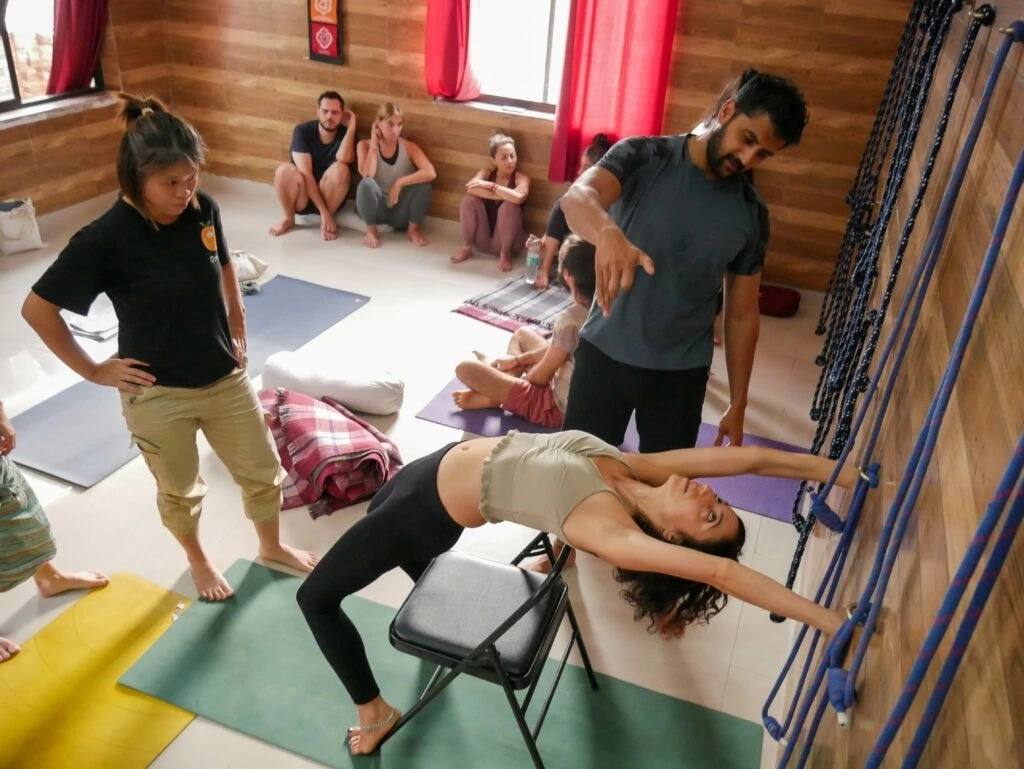Namaste, dear seekers of inner tranquility and mental clarity. We’re Rishikesh Yogi, and we welcome you to this spiritual area where we delve into the profound teachings of yoga.
Today, we embark on a journey to discover how the rules of yoga add to the attainment of mental clarity as well as inner tranquility.
Yoga is not simply a physical method; it is a holistic method of life. It includes the mind, body, as well as spirit. One of the keystones of yoga ideology is the Eightfold Path, additionally referred to as Ashtanga Yoga. This was laid out by the sage Patanjali in his Yoga Sutras.
Below we have laid out points explaining how the rules of yoga, help a person to attain mental clarity and peace. This overview puts down ethical concepts that, when complied with, can lead us to a state of inner serenity.
The Role of Yoga in Achieving Mental Clarity and Peace
Yama – The Foundation of Ethical Living
The very first arm of the Eightfold Course includes five Yamas or moral restrictions. These include Ahimsa, Satya, Asteya, Brahmacharya, and Aparigraha.
By practicing these yoga concepts in our everyday lives, we develop a strong foundation for inner peace. Ahimsa teaches us to be caring in the direction of ourselves and others. While, Satya urges transparency and sincerity, advertising mental clarity and reducing internal dispute.
Niyama – Self-control and Inner Observation- Rules of yoga
The 2nd limb of yoga, Niyama, focuses on self-discipline and inner observation. It includes concepts such as Saucha (cleanliness), Santosha (satisfaction), Tapas (self-discipline), Svadhyaya (self-study), and Ishvara Pranidhana (surrender to a higher power).
These guidelines help us cultivate mental clarity by promoting a feeling of contentment and inner representation. With self-study (Svadhyaya), we acquire insight right into our thought patterns, permitting us to choose more relaxed as well as positive psychological states.
Asana – Physical Postures
While frequently corresponding with yoga in the West, Asana, or physical stances, is one part of the Eightfold Path. Exercising yoga positions helps release physical stress, making it much easier to sit in meditation for extensive periods. A kicked-back body sustains a tranquil mind, leading the way for mental clearness and inner tranquility.
Pranayama – Breath Control
The 4th limb, Pranayama, instructs us on breath control techniques that relax the mind and vitalize the body. By managing the breath, we gain mastery over the variations of the mind. This rule of yoga helps bring about boosted psychological clarity and a feeling of inner calm.
Pratyahara – Withdrawal of the Senses
Pratyahara, the fifth arm or leg, guides us in turning our attention internally. In our modern world loaded with distractions, this technique helps us detach from outside stimulations, permitting us to focus on our internal landscape. As our detects turn internal, we can access much deeper layers of consciousness, bringing about extensive internal peace.
Dharana – Focus
Dharana, the 6th arm or leg, includes concentration methods. By educating the mind to focus on a single point, such as the breath or a rule. We develop our psychological faculties and reduce mental clutter, leading the way for clarity as well as peacefulness.
Dhyana – Reflection – a rules of yoga
Dhyana, the 7th limb, is reflection. Through continual focus, we get into a state of meditation where the mind becomes still. We also experience the profound tranquility that exists within us. Routine meditation practice is crucial to maintaining internal peace.
Samadhi – Union with the Divine
The ultimate goal of yoga is Samadhi, where the individual self combines with the global consciousness. In this state, we experience total inner tranquility, liberation from suffering, and a deep sense of unity with all that exists.
To conclude, the rules of yoga, as laid out above, provide us with a thorough roadmap to psychological clarity and inner peace. By practicing ethical concepts, growing self-discipline, mastering the body and breathing, and transforming our interest inward. We can experience the profound improvement that yoga deals with. It is our genuine hope that you find your answers in this blog and start your own journey toward internal tranquility.
May your journey be loaded with light as well as calmness.
Om Shanti, Shanti, Shanti

